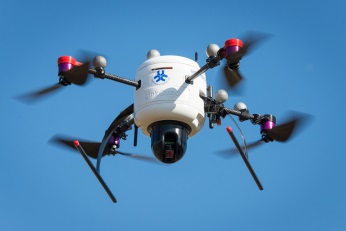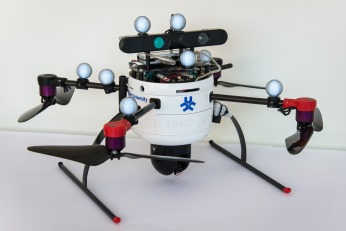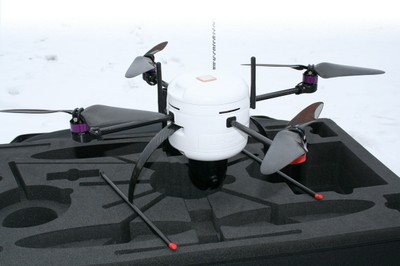The second of the main UAV platforms used in this project is the LinkQuad, a highly versatile Micro Aerial Vehicle. Several of these helicopters are available for use in the CUAS project.
Physical Characteristics
With its compact design (below 70 centimeters tip-to-tip), the LinkQuad platform is suitable for both indoor and outdoor use. Its maximum take-off weight is 1.4 kilograms, with up to 300 grams of payload. Custom designed optimized propellers contribute to an endurance of up to 30 minutes.
The LinkQuad airframe is characterized by a modular design which allows for easy reconfiguration to adapt to a variety of applications. A twist and lock design is used for adding and removing external sensor modules in the field for on the-fly mission adaptability. Depending on the required flight time, one or two 2.7 Ah batteries can be placed inside an easily swappable battery module.
Computational Hardware
The LinkQuad system is equipped with a 4th generation LinkBoard flight control system, with a modular design allowing processing components to be reconfigured based on mission requirements.
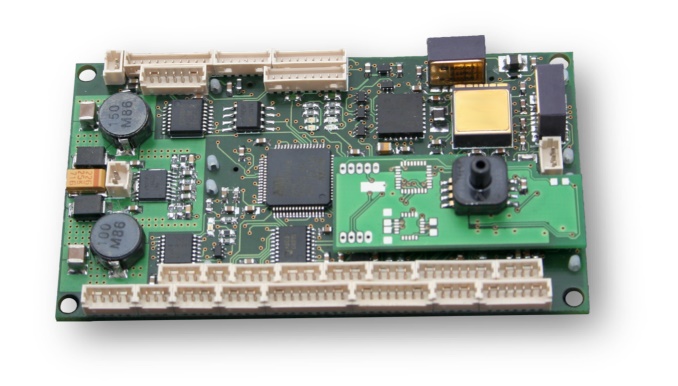
Central to the the LinkBoard is two ARM-Cortex microcontrollers executing core flight functionalities. Two Gumstix Overo COMs (Computer-On-Module) running Linux can also be added in order to run computationally demanding applications such as autonomous indoor vision-based navigation systems, where all computation is performed on-board. In the full configuration, the LinkBoard weighs 30 grams, has very low power consumption and has a footprint smaller than a credit card.
There are a number of sensors integrated on the LinkBoard, including a 3-axis accelerometer, 3 low-drift rate gyroscopes, an absolute pressure sensor and a fast 4-channel 12bit A/D converter for external sensor integration. A number of external sensors can be added, such as a GPS receiver, a USB camera, a laser range finder, an ultrasonic range finder, and an 3-axis magnetometer.
All of the sensor data and control signals are available through a clearly defined and easy to use API. The API allows for the implementation of custom control algorithms.
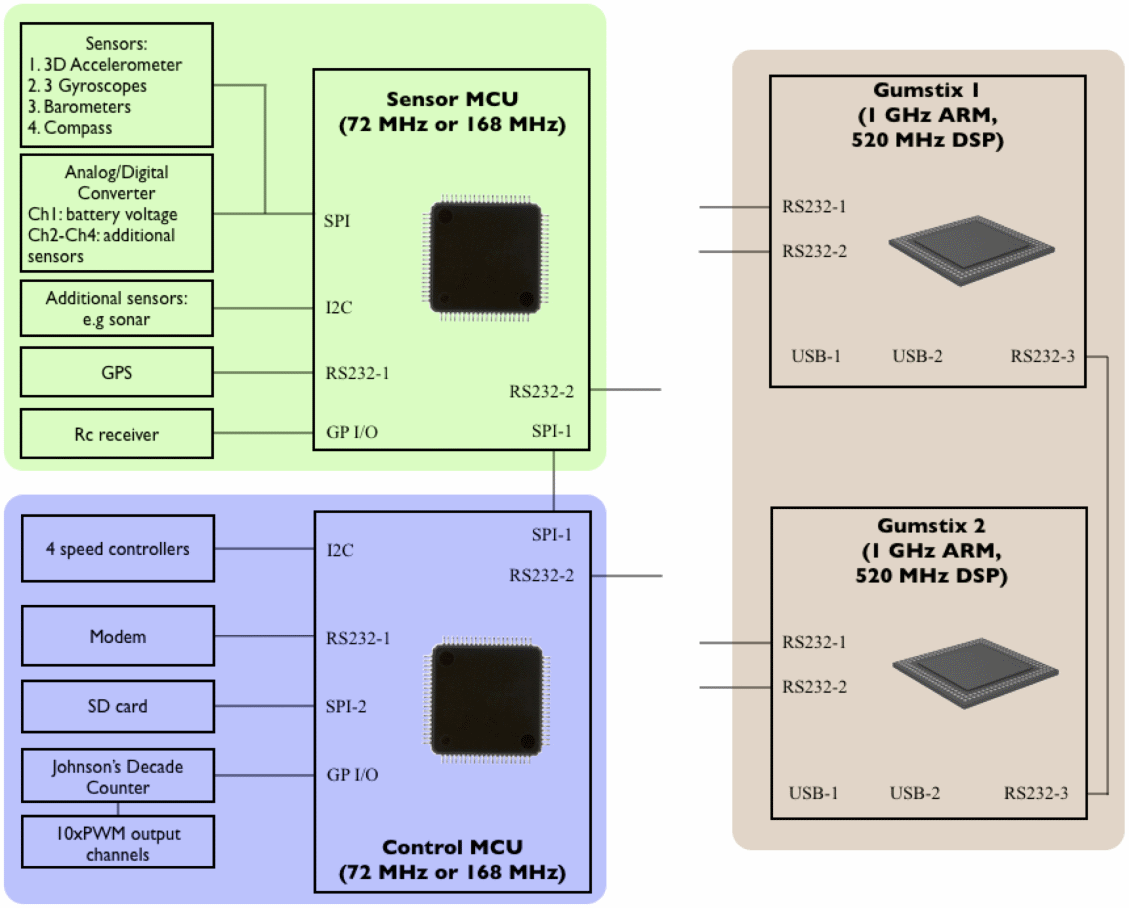
Communications, Sensors and Other Hardware
Communication with the platform in the air can be achieved using WiFi, Bluetooth or a long range (1 km line-of-sight) data modem. An easily accessible SDCard slot can also be used for high rate (500Hz) data and mission logging when the wireless bandwidth is not sufficient.
The LinkQuad can be equipped with different sensor payloads. The Twist & Lock sensor module mounting makes it easy to swap sensors in the field to adapt to mission at hand.
A standard analog video pan-tilt sensor module uses a wireless transmitter/receiver and a FireWire frame-grabber which allows for viewing a video stream in real-time on the ground station computer.
A digital video pan-tilt camera sensor module features a USB interface and allows for on-board image processing.
Additional modules include an infrared camera and laser range finder.
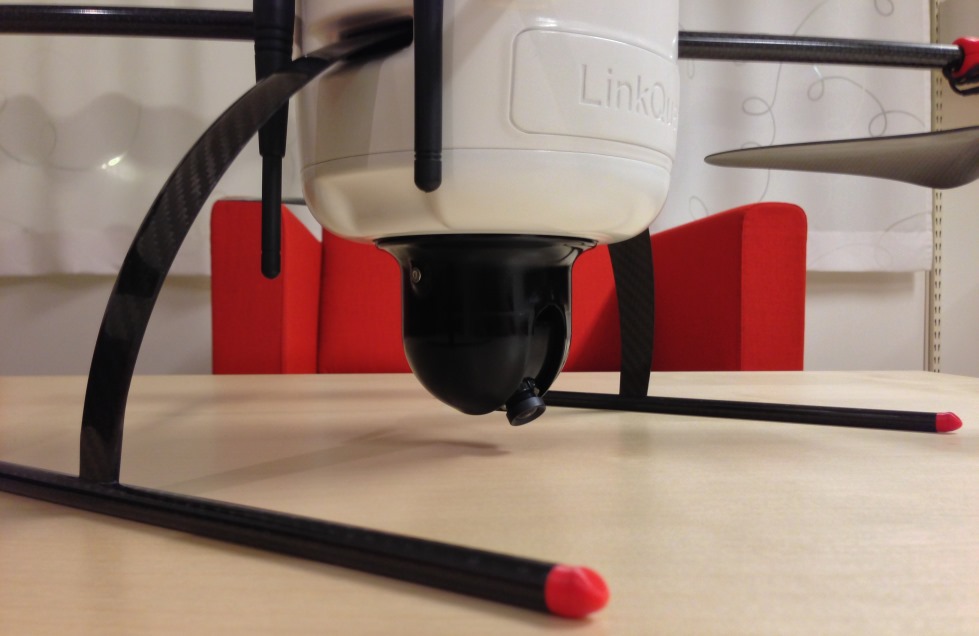
Page responsible: Patrick Doherty
Last updated: 2015-01-22


